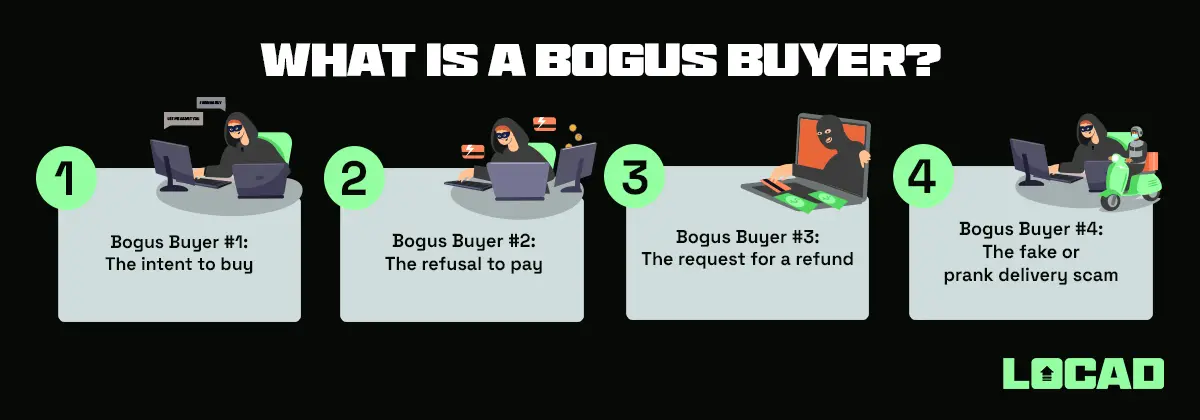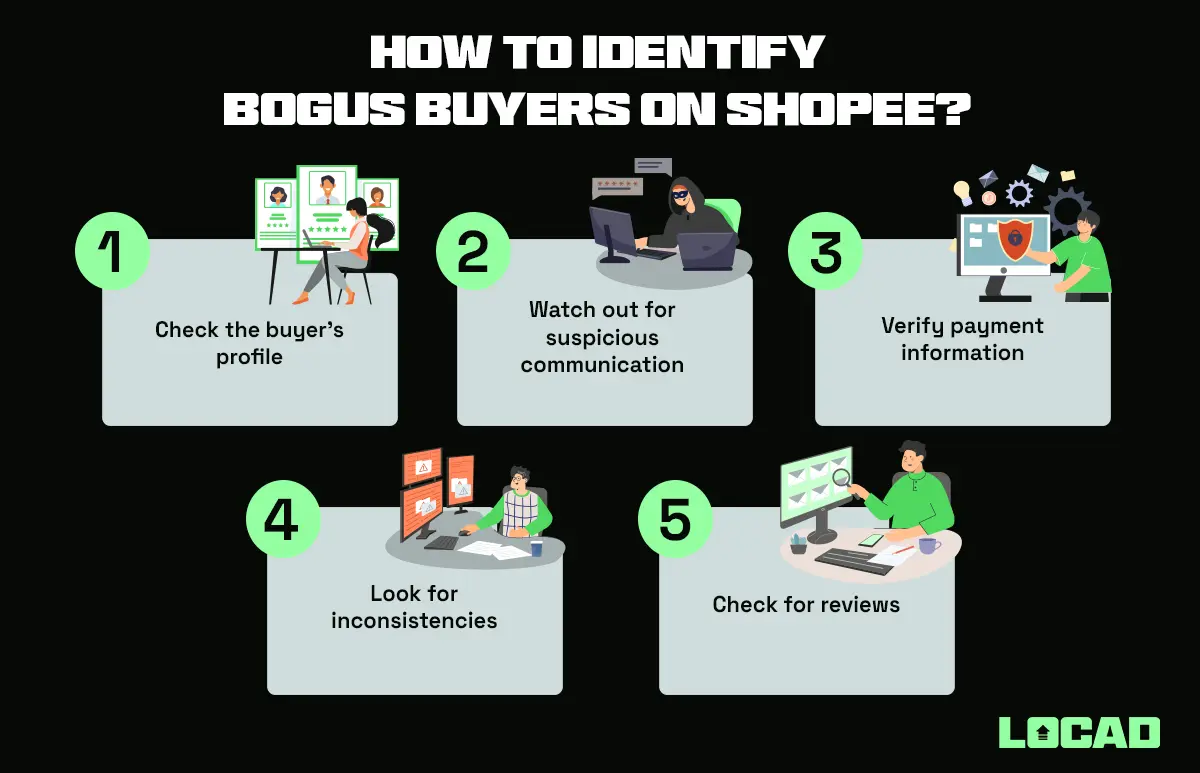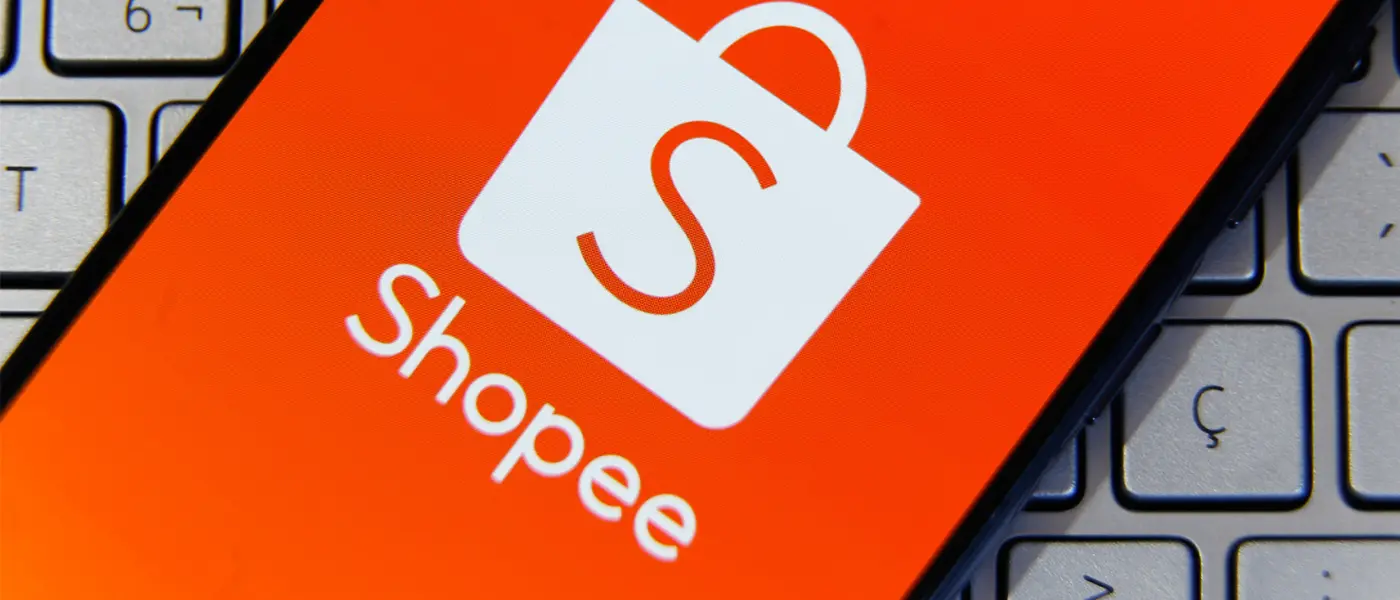“Scam,” “bogus,” and “fraud” are perhaps the most dreaded words when it comes to the e-commerce or online business space.
Unfortunately, scams do happen and can happen on both sides: there are fraud sellers, and there are bogus and/or fraud buyers.
According to a report by Statista, the most common fraud Southeast Asians encountered while shopping on social media was product fraud, with 70% of the surveyed population experiencing it. Similarly, for each dollar of fraud costs retailers $3.13.
Luckily, many measures are in place, and many customers are now equipped with information and legal ways to avoid such scams and fraudulent transactions. Likewise, there are also consumer laws that offer some protection against these bogus or fake sellers and buyers.
If you are a large e-commerce business or just starting out and not aware of these fraudulent activities and take necessary precautions against bogus buyers, this article is for you.
In this article, we will discuss some common tactics bogus buyers use and provide tips on how to avoid falling victim to their scams.
Join us in the fight against e-commerce fraud and protect yourself and your business from financial losses.
What is a bogus buyer?

A bogus buyer pretends to be interested in purchasing an item but has no intention of paying for it. The bogus buyer will often order the item online but not pay for it. Usually, the bogus buyer will declare that the item received is damaged, deny that the item was received, or refuse to pay for the item outright due to various—often made-up–reasons.
They can operate in a variety of ways, but some of the most common tactics include the following:
Bogus Buyer #1: The intent to buy
A bogus buyer will express an intention to buy an online item and follow the usual process of reserving the product. Reserving the product serves an important purpose. Aside from giving the seller advance information that the customer will buy it, the seller can also take the item off the shelf so that other customers can no longer purchase it. This is particularly applicable to hard-to-find items. However, the bogus buyer will all of sudden cancel the order. The particularly frustrating part is that the bogus buyer will often “disappear” to complete the buyer fraud.
What does this mean to the seller? Aside from losing the sale, the seller will also lose the opportunity to sell the product to a legitimate buyer. Of course, a buyer can always put it up for sale again, but the time and effort are already wasted.
Bogus Buyer #2: The refusal to pay
A bogus buyer goes through the usual process of ordering, confirming, and getting the item delivered. The problem arises when the supposed customer refuses to receive the item for multiple reasons. This scenario might be rare in the Philippines, as customers are often charged delivery fees. However, the seller will bear the brunt of wasted time and lost opportunities.
Bogus Buyer #3: The request for a refund
Again, the bogus buyer goes through the whole process, receives the transaction, and pays for it. However, a bogus buyer will make false accusations regarding the received item, such as claims that the product is incomplete, damaged, or not the right item that was ordered. The bogus buyer will then demand monetary compensation or a refund. Unfortunately, some of these bogus buyers might even invoke the mantra “The customer is always right” in a twisted way, making it even harder for the seller to resolve such an issue.
Bogus Buyer #4: The fake or prank delivery scam
This modus might be aligned more with the “intent to buy” category, but it perhaps deserves to be mentioned on its own. There was a widely covered news item in the Philippines in late 2021 involving a massive surge of fake deliveries, so much so that the Philippines’ Department of Trade Industry had to step in. How did the bogus buying happen? It was reported that numerous delivery riders fell victim to a fake booking in Manila after a prankster ordered food worth thousands of pesos from them without paying.
The modus is truly nefarious. It even involved prominent personalities and politicians. One case involved more than 100,000 pesos of supposedly ordered groceries that had to be paid via cash-on-delivery (COD).
It was later found that fictitious names and fake identities had been used in the fraudulent transactions.To avoid falling victim to these scams, it is important to be cautious when dealing with buyers who seem too good to be true. Always verify their identity and payment information before shipping any merchandise, and only provide personal information if you are sure it is necessary.
How your Shopee Store can Grow with a Logistics Engine
Whether you are a seasoned online seller, or a local businessperson who just ventured into the e-commerce world the past…
Why do bogus buyers target Shopee sellers?

Shopee store is one of the fastest-growing e-commerce platforms in Southeast Asia. As a result, it has become a popular target for bogus buyers looking to scam sellers out of their merchandise or money. Some of the reasons why bogus buyers often target Shopee sellers include the following:
- Low barrier to entry: Shopee makes it easy for anyone to become a seller, which means that many inexperienced sellers on the platform may need to be made aware of the risks associated with e-commerce.
- Large customer base: Shopee has a large customer base, meaning there are more potential buyers for bogus buyers to target.
- Ease of communication: Shopee has a built-in messaging system allowing buyers and sellers to communicate. While this is a convenient feature, it also makes it easier for bogus buyers to communicate with sellers and perpetrate their scams.
- Low transaction fees: Shopee charges lower transaction fees than other e-commerce platforms, making it an attractive option for sellers. However, this also means fewer investment resources in fraud detection and prevention.
- Lack of stringent verification process: Shopee’s verification process for buyers is less stringent than those of other e-commerce platforms, making it easier for bogus buyers to create fake accounts and perpetrate their scams.
- Limited information about buyers: Shopee needs to provide sellers with detailed information about their buyers, such as their contact information or IP address. This makes it harder for sellers to identify and report bogus buyers.
Shopee sellers need to be aware of these risks and take necessary precautions to protect themselves from bogus buyers. By being vigilant and following best practices for e-commerce, sellers can reduce the likelihood of falling victim to scams and fraudulent activities.
How your Shopee Store can Grow with a Logistics Engine
Whether you are a seasoned online seller, or a local businessperson who just ventured into the e-commerce world the past…
How to identify bogus buyers on Shopee?

As a Shopee seller, it’s important to be able to identify and avoid bogus buyers to protect yourself from scams. Here are some tips for identifying bogus buyers based on their behaviour and communication patterns:
- Check the buyer’s profile: Before agreeing to a sale, look at the buyer’s profile. If the profile is incomplete or lacks any details, it could be a sign that the buyer is not serious or may be a scammer.
- Watch out for suspicious communication: Be wary of buyers who are overly pushy or aggressive in their communication. Bogus buyers may try to rush you into a sale or use threatening language to intimidate you.
- Verify payment information: Always verify the payment information provided by buyers. If the information seems suspicious or the buyer refuses to provide it, it could be a sign of a scam.
- Look for inconsistencies: Be on the lookout for inconsistencies in the buyer’s behaviour or communication. For example, if the buyer changes their story or provides conflicting information, it could be a sign that they are not being truthful.
- Check for reviews: Before agreeing to a sale, check the buyer’s reviews and ratings. If they have a history of negative reviews or complaints, it could be a sign that they are not a trustworthy buyer.
By keeping an eye out for these warning signs and taking steps to vet buyers before agreeing to a sale, Shopee sellers can reduce their chances of falling victim to bogus buyer scams.
In the next section, we’ll explore some of the best practices for avoiding scams and protecting yourself as a Shopee seller.
How can Shopee Sellers protect themselves?
As one of the most popular selling platforms and marketplaces in Southeast Asia, Shopee has made significant breakthroughs in ensuring its customers are protected from scams.
Although scams might be considered inevitable because sellers and buyers can always have the option to transact outside the online platform, scammers and bogus sellers nowadays are fairly easy to spot.
Shopee, a premier marketplace, also has its Shopee Guarantee feature, which is said to protect both sellers and buyers. In a nutshell, this feature “protects users by holding the payment to sellers until the buyer confirms the receipt of the order. Once the buyer accepts the order, the payment will be released to the seller.” It is a lot more complex than this short description, but it essentially makes sure that buyers and sellers are both protected.
Online marketplaces, such as Shopee, are also very strict in making sure only legit merchants can join the platform. Policies are also in place to ensure merchants abide by rules to protect customers and themselves.
Shopee’s Seller Education Hub, for example, has very useful information when it comes to seller protection. One key recommendation from Shopee is that sellers cannot direct buyers to transact outside Shopee.
As a Shopee Seller, it is always useful to tap Shopee’s trove of information and be familiar with its policies.
Unfortunately, scams can still happen even on a platform such as Shopee.
Here are a few more ways Shopee Sellers can protect themselves against bogus buyers.
1. Information is key
There are laws specifically against bogus buyers. In the Philippines, one law–Article 315 of the Revised Penal Code–is often used against bogus buyers.
This law states that “estafa or swindling is committed with unfaithfulness or abuse of confidence, by means of false pretences or fraudulent acts, and through fraudulent means.”
This law targets bogus buyers using fictitious names, and violators may get serious prison time depending on the number of fraudulent transactions involved. Shopee Sellers can also access the Department mentioned above, which has its hotline dealing with prank callers and bogus buyers.
One of the recommendations that the DTI often gives to online sellers is to document the whole transaction between the seller and bogus or fake buyers. Mobile messages, chat messages, calls, etc., can be used against the bogus buyer as these interactions can be proof of a bogus buyer’s intentions.
2. An enhanced terms and conditions
Shopee Sellers can also enhance or strengthen their “terms and conditions.” Although you might need legal experts on this, the effort will be worth it when it comes to protection against bogus buyers.
One provision on your terms and conditions might be more thorough “buyer information” requirements, particularly if the item is expensive. Again, having a legal expert might be needed to “foolproof” your terms and conditions.
Another way is that a seller can also set up payment options and tap third-party solutions providers for this. While many buyers and sellers lean toward COD transactions, it is more prudent to pre-payment options to make refunds or claims of item return less of a headache for the Shopee Seller.
Under the terms and conditions, the seller might also be able to set time limits for products that have been reserved. This can be particularly useful for bogus buyers who often reserve items but have no intention to pay. Setting time limits and conditions for specific returns and refunds is also useful. Asking customers for proof, such as videos or photos of the unboxing of goods, might be a good idea, particularly when it comes to refunds or returns. As a seller, you can also document that the product being shipped is in good condition before passing it on to the delivery or fulfillment provider.
You could also have a buyer rating system that can be used to warn other sellers of particular buyers. While public shaming of bogus buyers might sound like a very good idea, this can still be tricky, particularly if the seller needs more evidence against the bogus buyer. Also, certain privacy issues exist and should be considered. Again, familiarising yourself with the policies of the online platform will be very useful.
These methods are familiar, and most Shopee Sellers now have them in place, but depending on your market, these methods can be enhanced and improved to deal with bogus buyers.
Bogus buyer laws: For the Southeast Asia market
While there are no specific laws governing bogus buyers, many countries in the region have consumer protection laws in place to prevent fraudulent activities. Here’s an overview of the laws surrounding bogus buyers in some of the major countries in the region:
- Philippines: The Philippines has a Consumer Act (Republic Act No. 7394), which protects consumers from deceptive and unfair trade practices. Under this law allows bogus buyers who engage in fraudulent activities to face fines and imprisonment.
- Indonesia: In Indonesia, the government has introduced several regulations to protect consumers, including the Consumer Protection Law (Law No. 8 of 1999). This law regulates consumer protection and provides legal sanctions for fraudulent activities.
- Malaysia: Malaysia’s Consumer Protection Act 1999 protects consumers against unfair trade practices, including fraudulent activities by bogus buyers. The act also allows consumers to seek compensation for losses from such activities.
- Thailand: The Consumer Protection Act B.E. 2522 (1979) is the primary law in Thailand that protects consumers from fraudulent activities. The act provides consumers various rights, including the right to claim compensation for losses suffered due to fraudulent activities.
- Singapore: Singapore’s Consumer Protection (Fair Trading) Act protects consumers from unfair practices and provides them with various rights, including the right to seek compensation for losses from fraudulent activities.
Shopee sellers need to understand the implications of these laws for their business. By understanding the laws in their respective countries, sellers can take steps to protect themselves and ensure that they comply with local regulations.
How your Shopee Store can Grow with a Logistics Engine
Whether you are a seasoned online seller, or a local businessperson who just ventured into the e-commerce world the past…
Wrapping Up
In conclusion, bogus buyers are a real threat to e-commerce businesses, especially those on rapidly growing platforms like Shopee. However, sellers can protect themselves and their businesses from financial losses by being aware of their tactics and taking necessary precautions.
Always verify buyers’ identity and payment information before shipping any merchandise, and never provide personal information unless necessary. Look out for warning signs like requests for personal information, offer to pay with a check, or asking for a refund without returning the item.
It’s also important to understand the consumer protection laws in your country and take steps to comply with them.
If you have any questions about bogus buyers or how to protect your e-commerce business, feel free to reach out. We’re here to help!
Upgrade your Shopee store’s logistics with Locad
FAQs
What should I do if I encounter a suspicious buyer on Shopee?
If you encounter a suspicious buyer on Shopee, it’s important to proceed with caution. Be sure to carefully review the buyer’s profile and ratings, and be wary of any requests or behavior that seem unusual or suspicious. If you believe that the buyer may be a bogus buyer, report the incident to Shopee’s customer service team.
Can I get my money back if I fall victim to a bogus buyer scam on Shopee?
If you fall victim to a bogus buyer scam on Shopee, it can be difficult to get your money back. However, if you used Shopee’s integrated payment system and can provide evidence of the scam, Shopee may be able to assist you in recovering your funds.
How can I protect myself from bogus buyer scams on Shopee?
To protect yourself from bogus buyer scams on Shopee, be sure to use Shopee’s built-in security features, such as the integrated payment system and delivery tracking. Additionally, be cautious of new buyers with no purchase history or ratings, and never ship items until payment is received.
What are some common tactics used by bogus buyers on Shopee?
Bogus buyers on Shopee often use tactics such as requesting to communicate outside of the platform, insisting on using a particular courier, and making false claims about the condition of the item received. Be sure to carefully review all communication from buyers and be wary of any behavior that seems suspicious.
Can I trust all buyers on Shopee?
While the vast majority of buyers on Shopee are legitimate, there is always a risk of encountering bogus buyers who are looking to scam sellers. By following best practices for vetting buyers and using Shopee’s built-in security features, you can reduce your risk of falling victim to these scams.












